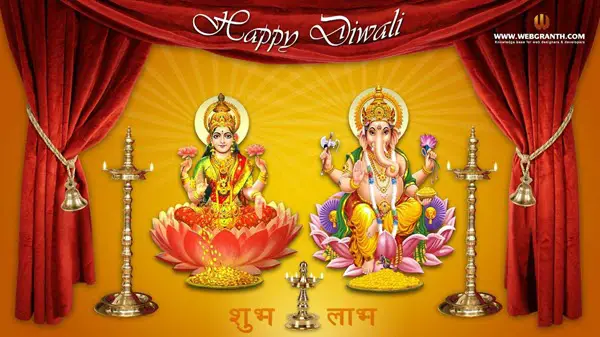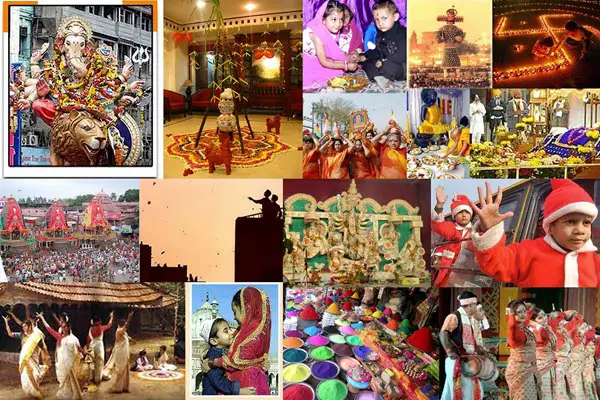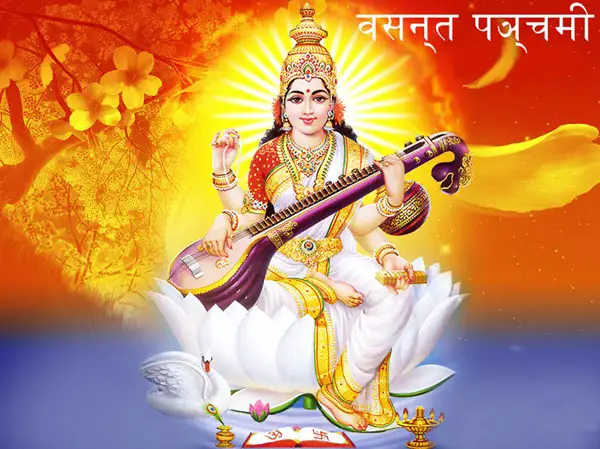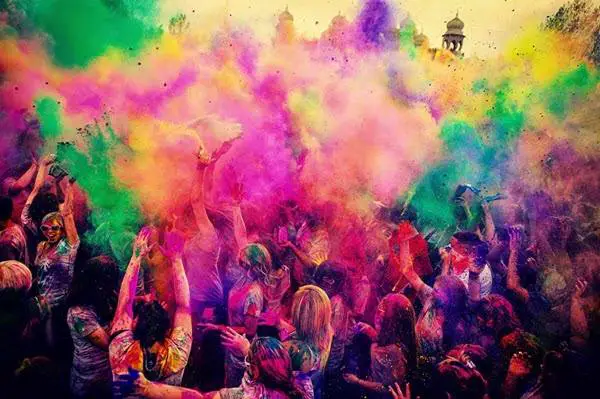The birthday of Lord Krishna is celebrated as Krishna Janmashtami. It is an annual celebration that marks Lord Krishna’s birth, considered an incarnation of Lord Vishnu, the eighth “Avatar” of Lord Vishnu.
Lord Krishna is one of the favorite deities of Hindus. All Hindus consider him their hero, protector, teacher, and friend. The Krishna Janmashtami Celebrations are held throughout the country and also in various parts of the world.
The Krishna Janmashtami Festival is known by several names, such as Krishnashtami, Gokulashtami, Srikrishna Jayanti, Sree Jayanti, Janmashtami, etc. It is an occasion to celebrate the rich persona of Lord Krishna, who took birth to dispel evil and spread the message of love and universal brotherhood.
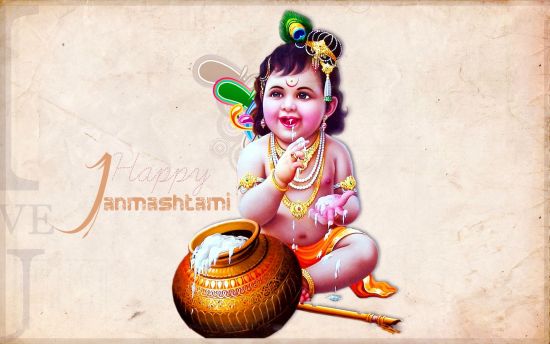
Image Credit: allindiaroundup.com
Moreover, Janmashtami is an extremely rewarding devotional experience. The Janmashtami festival is celebrated with great joy and enthusiasm by people from all across the globe.
According to the Hindu, the auspicious day of Krishna Janmashtami (the day on which Lord Krishna took birth) is celebrated on the eighth day of the dark fortnight in the month of the Bhadrapad calendar. That’s why it is known as Janmashtami. It usually falls in August or September.
The Janmashtami festivities are marked by elaborate celebrations that continue for the whole day. The performance of “Rasa Lila,” decorating “Jhakis,” fasting, Janmashtami songs, “Jagran,” playing “Dahi Handi,” and distribution of gifts are just some of the unique aspects of this extremely lively and vibrant Hindu Festival of Krishna Jayanthi.
Table of Contents
Why is Krishna Janmashtami celebrated?
Krishna Janmashtami marks the birthday of Lord Krishna.
He was the eighth son of Princess Devaki and King Vasudeva.
It is believed that Lord Krishna was born on 18th July 3228 BCE and lived until 18th February 3102 BCE. His birthplace was Mathura, which is located in the present-day Mathura district of Uttar Pradesh. He belonged to the Vrishni clan of Yadavas from Mathura. (Source: Wikipedia)
King Kansa, the brother of Devaki, then ruled Mathura. He captured the throne by imprisoning his father, King Ugrasena. Kansa was a cruel ruler. He tortured the people of Mathura. Everybody wanted to get freed from the evil rule of Kansa.
A prophecy had predicted that Kansa would die at the hands of Devaki’s eighth son. Hearing this prophecy, Kansa got afraid, and he locked Devaki and Vasudeva in a prison cell.
Kansa began to kill Devaki’s sons, one after the other. Finally, when she was about to give birth to her eighth son, Lord Vishnu appeared to them and told them to take the son (Krishna) to Gokul to Nanda and Yashoda.
When Krishna took birth, Vasudeva took him to Gokul, crossing the Yamuna River, and quietly placed the child beside Yashoda. Then, he returned with Yashoda’s daughter.
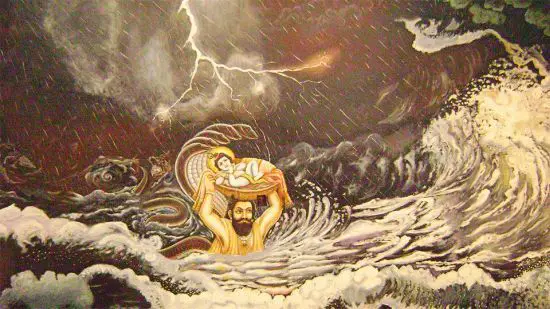
Image Credit: sadhguru.org
Kansa thinking the child to be the eighth son of Devaki, threw her on a stone, but she transformed herself into Yogmaya and warned Kansa that he would be killed at the hands of Krishna.
Later on, when Krishna grew up, he returned to Mathura and killed Kansa. Everybody in Mathura rejoiced at Kansa’s killing at the hands of Krishna and praised the Lord for freeing them from the evil rule of Kansa.

Image Credit: postpickle.com
How Krishna’s Birthday is celebrated?
Lord Krishna is believed to have been born at midnight on Janmashtami day. Hence, the celebrations reach their height at midnight on Janmashtami day.
The Janmashtami celebrations are special in Mathura, Vrindavan, Gokul, and Dwarika, where Krishna spent most of his life.
Devotional songs, dances, Pujas, and Aarti, mark the celebrations. Temples are decorated, and people stay awake all night on Janmashtami. Krishna Jayanthi is celebrated in most parts of the country and abroad with great devotion, joy, and enthusiasm.
The Janmashtami festivities start before dawn and continue all day long until late midnight. Celebrations are marked with Kirtans in which devotees sing hymns praising Shri Krishna. Dance and drama (usually Rasa Lila) are a special part of the Janmashtami celebrations.
The deity of Krishna is decorated with flowers and garlands. The idol of Krishna is also bathed with a variety of auspicious liquids. Infancy Images and small idols of Krishna are placed in cradles in temples and homes. They are elaborately decorated with ornaments, flowers, and beautiful clothes.
Devotees usually fast on the day of Janmashtami. Prasad is distributed after the conclusion of the birth ceremony of Lord Krishna.
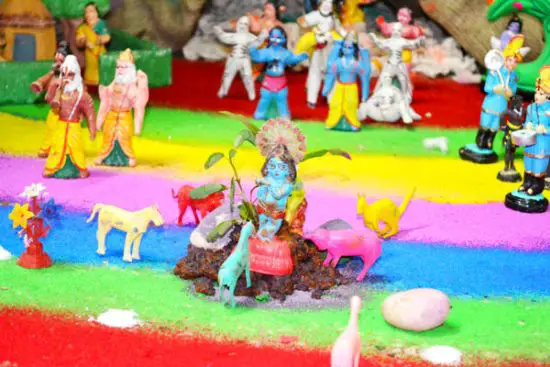
Let’s take a glimpse at the Janmashtami festivities in various parts of India:
Northern India
Janmashtami celebrations are at their peak in cities like Mathura, Gokul, and Vrindavan. People from all parts of India thronged to these places to participate in Janmashtami celebrations. Elaborate arrangements are made, and Krishna Temples are decorated with flowers and colorful lighting.
People gather in large numbers in temples and participate in festivities that continue the whole day of Janmashtami. Dancing, songs, drama performances, puja rituals, and Aarti are the hallmark of Janmashtami festivities. In Jammu, people take part in kite flying on this auspicious day.
Eastern India
In Odisha and West Bengal’s eastern state, people celebrate Janmashtami by fasting and all-day worship of Lord Krishna.
The Bhagavata Maha Purana organizes Purana Pravachana. The next day, people participate in the “Nanda Utsav” and offer sweets to each other.
Maharashtra
Maharashtra, particularly in Mumbai and Pune, Janmashtami or Gokulashtami is celebrated as “Dahi Handi.”
It is an event in which a human pyramid is formed, trying to break an earthen pot filled with buttermilk tied at a convenient height. The topmost person in the human pyramid tries to break the pot. The participants in “Dahi Handi” are called Govinda Troops. Gifts and cash prizes are offered to these participants.
Southern India
People in South India celebrate Janmashtami with great joy and fervor. They decorate their houses. They sing devotional songs in praise of Lord Krishna. Verses of the Bhagavad-Gita are also recited.
Lord Krishna’s idols are decorated. People offer sweets and fruits to Lord Krishna. Some of the important sweets are Seedai and Verkadalai Urundai. Most people observe fast on this day. Young children are dressed like Lord Krishna.
Janmashtami Songs
Janmashtami Songs are an important part of the festival. People sing hymns and devotional songs in praise of Lord Krishna.
People gather in large numbers in temples around the country. They participate in religious festivities. Dancing, drama, and songs are important to their Janmashtami celebrations.
When is Janmashtami Celebrated
Janmashtami is celebrated on the eighth day of the dark fortnight in Bhadrapad, usually in August or September.
Devotees usually observe a fast on this day. As per Vedic time-keeping, Krishna Puja is performed during the Nishita Kala at midnight on Janmashtami.
Janmashtami is an auspicious occasion to celebrate the birthday of Lord Krishna. It is a day to rejoice, dance, and remember the Supreme Lord Krishna, who came to this Earth to give happiness to everyone.
Krishna Janmashtami Date 2024
Janmashtami Date: 26th August 2024, Monday
Nishita Puja Time: 12:01 AM to 12:45 AM on 27th August
Ashtami Tithi Begins: 03:39 AM on 26th August 2024
Ashtami Tithi Ends: 02:19 AM on 27th August 2024

